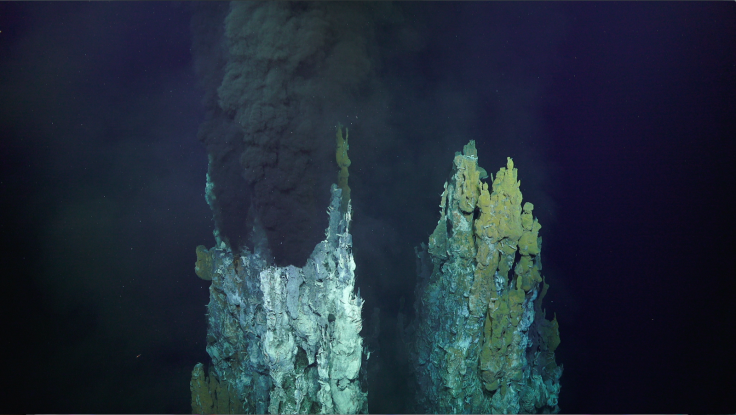Deep seas set to warm by 4C leading to famine and mass extinction by 2100
Larger marine animals are expected to starve first as the seas warm and food scarcity increases.
Climate change is predicted to halve the amount of food reaching marine life on the sea floor by the end of the century, transforming life in the deep oceans and leading to mass extinction of larger animals.
Warming of the oceans is one of the major factors identified in 31 Earth modelling systems that will lead to mass die-offs in the coming decades, finds a paper published in the journal Elementa. Alongside ocean deoxygenation and acidification, these factors are expected to hit marine life hard and decrease the biodiversity of life in the mid to deep oceans.
Temperatures in the seas at depths of 200 metres to 3km – the bathyal region – are set to go through the most profound transformation, warming by 4C compared with today's temperatures in the Pacific, Atlantic and Arctic oceans.
"That is a massive temperature change in these environments," said study author Andrew Thurber of Oregon State University in the US. "It is the equivalent of having summer for the first time in thousands to millions of years."
The deeper abyssal region, which stretches from 3 to 6km deep, is expected to warm by 0.5-1C in the North Atlantic, Southern and Arctic oceans.
Transforming ecosystems
At the same time as the oceans warm, the amount of food falling down to the lower levels is set to decrease dramatically.
"Biodiversity in many of these areas is defined by the meagre amount of food reaching the seafloor and over the next 80-plus years – in certain parts of the world – that amount of food will be cut in half," said Thurber. This is likely to be the most harmful to larger marine organisms initially.
"Some species will thrive, some will migrate to other areas, and many will die. Parts of the world will likely have more jellyfish and squid, for example, and fewer fish and cold water corals."
The research was carried out by 20 oceanographic research centres globally using many Earth system models developed for the Intergovernmental Panel on Climate Change to gain as holistic a view as possible of the changes we could see in the oceans this century.

Felt at the surface
The changes that are expected to begin in the deep oceans are expected to have knock-on effects at the surface. In particular, deoxygenated deeper waters can be caught in currents surging towards the surface. When these waters reach the coasts they can lead to mass death of sea creatures relevant for fishing industries.
"A decade ago, we even saw low-oxygen water come shallow enough to kill vast numbers of Dungeness crabs," said Thurber. "The die-off was massive."
These disruptions to the deep oceans could be worsened by the onset of deep-sea mining and fishing, as shallower waters become over-exploited.

"Pressure from fishing has led to many deep-sea fish species being severely exploited through trawling and longlining, with some species having been fished to commercial extinction," said Andrew Sweetman of the Lyell Centre for Earth and Marine Science and Technology at Heriot-Watt University in Edinburgh.
"Politicians the world over must recognise the vulnerability of life on the ocean floor to climate-related stressors, and the direct influence that the surface climate can exert on the world's largest ecosystem."
The findings come shortly after a study found that the deepest and most remote ocean trenches on the planet have become extraordinarily polluted, with high levels of human-made organic pollutants.
© Copyright IBTimes 2025. All rights reserved.






















